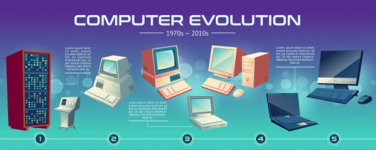
When did you first interact with a computer? The early ’90s through to the 2000s was marked by rapid technological development and the spread and distribution of computers in the US and all over the world. This was dubbed the technological era. It is around this time that I started checking out what more a computer could do besides playing games.
Around the same time, the gaming console was also developing rapidly. It was actually a tug of war between the gaming consoles and the computer games. Since the target market of the two was almost the same, they would converge at some point and compete intensively.
It has been a while since I reviewed the tech gadgets of those days. Computers of those days were designed to achieve specific functions. They were not as fancy as we see them today. And they were quite bulky. Owning a computer at home was still an expensive affair. But in the mid-90s, companies like IBM, HP, Compaq, and Gateway started designing machines that were affordable for home users.
First, let us take a look at a brief history of personal computers. Where they came from and the metamorphosis that they have gone through. It has been a long journey with lots of ups and downs for the technology companies. Some failed and closed down along the way, while some silicon kings soldiered on to give us the best pieces of computers and related gadgets that we still use in our homes today and industrial applications.
Here is a brief on the background history of personal computers.
The background history of the evolution of personal computers.
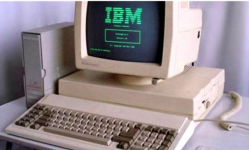 The history of personal computers (PCs) dates back to the 70s. It is around this time that computers started being produced as a mass-market electronic consumer product. This marked the beginning of the microcomputer revolution.
The history of personal computers (PCs) dates back to the 70s. It is around this time that computers started being produced as a mass-market electronic consumer product. This marked the beginning of the microcomputer revolution.But first, what is a personal computer?
A Personal Computer (Also referred to as PC) is a device intended for interactive individual use, unlike a mainframe computer, where the demands of the end-users are filtered by an operating team or a time-sharing system in which multiple people share a large processor. Following the invention of the microprocessor, personal computers were low enough to become affordable consumer products at the time.
Early personal computers, commonly referred to as microcomputers, were mostly sold in a small number of electronic kits and were of particular interest to hobbyist and technicians.
Evolution of the Personal Computers.
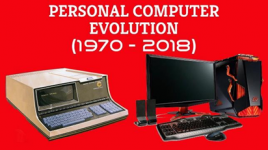
Did you know that even as far back as the 60s, the microcomputers concept was already in development? Yes, the first use of the word “Personal Computer” was made public in an article in the New York Times on 3rd November 1962. The article described John W. Mauchly’s vision of future computing as illustrated in a meeting of the Institute of Industrial Engineers. In this post, John said there is no reason why an average person should not master and use a personal computer. This was the beginning of an evolution of the PC as we know them today.
Around 1968, Hewlett Packard released its “Powerful Computing Genie” called the New Hewlett-Packard 9100A personal computer. This ad was considered to be harsh for the target audience and was substituted for a much drier announcement for the HP 9100A programmable calculator.
Over the following seven years, the phrase had become sufficiently well known as “Personal Computing,” as posted by Byte magazine. Creative Computing later described the personal computer as a “non-(time)shared device that has enough processing power and storage capabilities to meet every individual user’s needs.
Later on, in 1977, three new small computers did hit the markets which Byte would refer to as the 1977 Trinity of personal computing. Almost the same time, Apple II and PET 2001 were released as personal computers, while TSR-80 was designated as a household microcomputer that was intended to handle household tasks and personal financial management tasks. By the later 70s, more than half a million microcomputers had been sold and people started getting used to the concept of personal computers (PCs).
The coming of the Minicomputers, Mainframes, and Microcomputers.
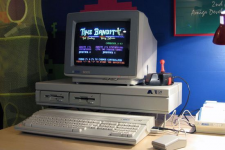
For time splitting access to central computers, computer terminals were used. In the early 70s, computers were usually massive, expensive devices operated by major companies, universities, government agencies, and similar organizations before the invention of the microprocessor.
End users don’t usually communicate directly with the system, but they will prepare on off-line equipment such as card punches for the device. A variety of tasks will be collected and performed in batch mode for the computer. Users could collect the results after the job was finished. In certain instances, the job to the computer center could take hours or days to get the output.
The mid 60 saw the introduction of an interactive way of computing that could be commercially marketed. Multiple computer terminals enabled many people to share the use of a mainframe computer processor in a time-sharing scheme. This was popular in business, science, and engineering applications.
The use of early pre-commercial experimental computers where one person used the exclusive processor was foreshadowed as another model of computer use. Students with access to some of the first computers experimented in locations like Carnegie Mellon University MIT with programs that were now common to a personal computer; for example, T-square, a software created in 1961, foreshadows computerized drawing and Spain’s ancestor of today’s computer game in 1962.
Some of the early computers that could be called “personal” like the LINC or PDP-8 computers, and later on VAX and larger Digital Equipment Corporation Computers (DEC), Data General, Prime Computers, and other computers. They were very big and cost-prohibitive by current standards. They were about the size of a standard refrigerator and costed tens of thousands of USD.
They were, however, much smaller, cheaper than many of the mainframe computers at the time, and generally easier to use. Access to single laboratories and research projects was therefore given. These organizations have essentially been liberated from batch processing and the bureaucracy of a business or university data center.
Moreover, mini-computers were reasonably social and had operating systems. With its graphical user interface, bit-mapped high-resolution display, big, internal or external memory storage, mouse, and special software, Xerox Alto 1973 microcomputer was a milestone in the development of personal computers.
In 1945, Vannevar Bush published an essay titled “ As We, May Think,” outlining a potential solution to the growing problem of the storage and retrieval of information. In 1968, SRI researcher Douglas Engelbart gave a glimpse of times that became the basis for working life in the 21st century; e-mails, hypertexts, word processing, video conferencing, and the mouse. In later years, he gave the name “The mother of all demons.” The demo was the end of the research at Engelbart’s Augmentation Research Center, which focused on the use of computer technology for creative thinking.
How the microprocessors reduced the cost of production of Personal Computers.

Early integrated circuit (also called microchip) technologies were used by modern personal computer microcomputers, which reduced the size and overall cost but did not include a micro processing unit. This said, like their mainframe counterparts, they were still big and hard to produce. The cost of building a computer device fell significantly when the computer-on-a-chip was commercialized. In one integrated circuit, there were now arithmetic, logic, and control functions that used to be occupied by many expensive circuit boards, allowing the production to take place in large quantities.
Advances in solid-state memory growth have replaced the bulky, expensive, and powerful magnetic core memory used in computers of previous decades.
The basic component of any microprocessor or memory chip is the field-effect transistor (MOSFET, or MOS), originally created at the Bell Labs by Mohamed Atall and Dawon Kahng. The first time MOSFET allowed the construction of integrated high-density circuits which contributed to the first microprocessor being developed.
The MOS technology, the MOS silicon gate Chip, invented by Federico Faggin in 1968, made the single-chip microprocessor possible by the creation in 1971 of the first single-chip microprocessor, the intel 4004.
How it all started: The start of the Personal Computing Industry.
In an article in The Star Magazine of 1949, long before the era of the PC, it was said that the computer would become affordable to every individual in the future. But at the time of publishing, there were no signs of development in that direction.
So, how did the evolution of the PC start?
Here are some of the Personal Computer from Way back in time.
Let us take a trip down memory lane and look at some of the first Personal Computers (PCs) to hit the market back in the days. These are some of the PCs the have come to define the look and feel of the PCs as we know them today.
Simon
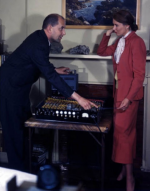
Simon was a project created by Edmund Berkeley and submitted to a series of 13 articles in the 50s, in the Radio-Electronics magazine. Although the development of Simon was much more advanced, it was the first experience to create an automated, simple digital computer for educational purposes. Its ALU actually only had 2 bits, and the memory total was 12 bits (2 bits by 6). It was sold in the 50s for 400 – 700 USD.
IBM 610
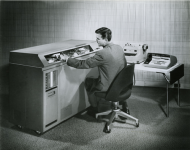
The IBM 610 was developed as a Personal Automatic Computer, and was announced by IBM as a 610 auto paint in 1957 by John Lentz in the Watson Lab at Columbia University. The IBM 610 treated floating-point arithmetic naturally even if it was defective due to its speed. Just 180 units were produced and cost around $40,000 – 56,000.
Elea Olivetti
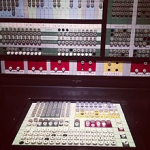
The Elea 9003 was built in the later 1950s as one of a number of mainframe computers by Olivetti. In 1957, it was the first prototype. The device was engineered, designed, and developed by a small group of scientists led by Mrio Tchou (1924 – 1961), entirely made of high-performance transistors. It was first machine built for solid-state (it was fully manufactured in Italy).
The results were applied to the popular electronic calculator program 101 a few years later.
LINC – Linc was built in 1962 and particularly intended for interactive use with lab tools; the LINC was an early lab machine. The users had assembled some of the early LINC computers from kits of parts by the users.
Olivertti Programma 101
Programma 101, which was first created in 1965, was one of the first programmable computers to do the printing. The machine was designed and manufactured by the Italian Olivetti Company, and the lead developer was Pier Giorgio Perotto. The Olivertti Program 101 was unveliled after two years of work at the New York World Fair in 1965. More than 44,000 units were sold all over the world, costing around USD 3200 at launch.
Because of its high computing capabilities and the small space it occupied, and the cost, NASA was also among the first owners; it was aimed at offices and scientific institutions for their everyday work. Built without built-in circuits or microprocessors, Program 101 used only transistors, resistors, and condensers for processing features like memory, keyboard, printing units, magnetic card recorder, monitoring, and arithmetic units were found in modern personal computers.
The program 101 architecture for HP9100 was subsequently copied by HP.
Datapoint 2200
The Datapoint 2200 is one of the earliest known computers developed in June 1970. It has an important resemblance to a modern personal computer with a CRT screen, keyboard, programmability, and software storage. The report was rendered by CTC (now Datapoint) and in an IBM electric typewriter case which housed the entire machine.
The machine’s CPU consists of approximately a hundred logic components (mostly TTL) consisting of groups of ports, latches, counters, and so on. Intel and Texas instruments were commissioned by the company to produce a single-chip CPU with the same features. TI quicky developed a chip-based on early designs by Intel. But there were some bugs in their attempt, and so they did not perform very well.
The version of Intel was delayed and they were both slow enough for the needs of CTC. In turn, Intel could sell the processor as its own product, along with the supporting ICs they produced, if hey did not charge CTC for the development work. Seiko was the first client to approach intel early on, based on Busicom’s experience of 4004.
This is how the Intel 8008 came into existence. Although it needed more than one IC, it is often referred to as the first 8-bit microprocessor. The Intel 8008 specification which later was extended to 8080, and the Z80 on which CP/M is designed, as defined by the datapoint 2200’s requirements. These CPUs inspired the 8086 processors, which are characterized the entire x86 processors for all IBM compatible PCs up to the present time.
Although they are technically very different, the architecture of the serial CPU based on the Datapoint 2200s TTL and the Intel 8008 was, they were mostly software compatible. The Datapoint 2200 functioned, therefore, as if it was using 8008 from a software perspective.
Kenbak-1
The Computer History Museum considered the world's first personal computer to be the Kenbak-1, which was released in the early 70s. The machine was developed, invented and first marketed in 1971 by John Blankenbaker of Kenbak Corporation. The Kenback1 was constructed from small integrated circuits and did not use microprocessor, unlike a typical personal computer.
The machines went for over 700 USD when they were first introduced. At the time only 40 machines were developed and sold. Kenback-1 stopped development in 1973 when the demand for them dropped.
The Kenbak-1 was the most useful way to learn the basics of programming but not capable of running application programs. It only had 256 bytes of memory, and word size and input and output confined to lights and switches. Interestingly, the Altair 8800, which was designed to be diametrically contrary to that of Kenbak in 1975, also features 256 bytes of memory, 8-bit word size, and I/O restricted on switches and lights on the front panel. The differentiating reality may have been that the Altair was not useful without the extension.
IBM SCAMP
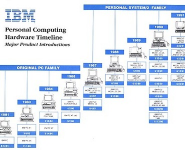
A portable computer prototype named SCAMP (Special Computer APL machine portable) was developed by a team led by Dr Paul Friedl at the IBM Los Gatos Scientific Center in 1972-73 using IBM PALM Processor with a compact Philips cassette drive, small CRT and full function keyboard. In order to execute APL\11130, SCAMP emulated an IBM 1130 minicomputer. In 1973 APL was usually only accessible on mainframe computers, and most microcomputers of desktop sizes, including Wang 2200 or HP 9800, only offered BASIC.
In 1983, PC magazine designated SCAN, a “revolutionary invention” and the first personal computer in the world, since it was the first to replicate APL\1130 work on a portable single-user computer. Its prototype was the Smithsonian institution.
IBM 5100

In September 1975, 6 years before IBM PC, IBM 5100 was launched as a desktop computer. In 1973 IBM demonstrated the development of the SCAMP (Special APL Mechanical portable computer). IBM released its larger cousin in January 1978, IBM 5110. In March 1982, the 5100 was withdrawn.
It was initially designed as the IBM 5150 when the PC was launched in 1981. It was included in the 5100 series, although it was not specifically built from the IBM 5100.
Altair 8800
The development of one-chip microprocessor was the way to make inexpensive, easy to use and truly private computers popular. It was just a matter of time for one such design to reach the price and output in a sweet place, and this engine is commonly known as the Altair 8800 from MITS, a small business that manufactures hobby electronic equipment.
The Altair was announced in January 1975 issue of a popular Electronic magazine. The Altair was marketed as a kit, in line with previous MITS ventures, although it consisted of four circuit boards and several components. With a price of just $400, Altair came up with higher demand and surprised its creators with thousands of orders produced in the first month. Inability to meet demand, after 10,000 kits had been delivered, MITS sold the design.
The Altair launch brought a whole industry on the basis of its basic design and internal design. New companies such as Cromemco, have been supplying add-on kits while Microsoft provided a BASIC system interpreter. Soon after, a whole range of “clone” designs, characterized by IMSAI 8080, was released on the market. This resulted in a wide range of systems based on the Altair S-100 bus, which generally improved the performance considerably as well as ease of use.
It was relatively difficult to use Altair and early clones. The computers had no operating systm in the ROM, so it was essential that a machine language program was entered manually, one place at a time, through front panel switches. The software was usually a small driver for a built-in tape reader, then read in a “real” program. The system subsequently introduced a bootstrapping code to enhance this mechanism, and almost invariably, associated devices were loaded from floppy disks by the CP/M operating system.
Atari 400/800
In the later 1970s, Atari, Inc. was well-known for its hit arcade game like Pong and the very famous VCS consoles of Atari. Atari was also well known. Before technically advanced competition came on the market, Atari concluded that the VCS would have short periods of life on the market and began working on a new, much more advanced console design.
During the development of these designs, the Trinity machinery was significantly popular on the market. The management of Atari wanted instead of turn their work into a home computer system. Their domestic experience through the VCS has made it nearly unwavering and simple to use as a gaming machine, simply plug in and go into a cartridge. In 1978, the Atari 400 and 800 were first labeled, but manufacturing issues prevented widespread sales until the following year.
Atari computers had the capabilities that no other microcomputer could match with a trio of custom graphics and sound co-processors and a 6502 CPU which was 80% faster than its peers. Despite a promising start of approximately 600,000 units sold by 1981, they were unable to cope effectively with the launch by Commodore of the Commodore 64 in 1982, and by the end of their production only about 2 million machines were built.
The 400 and 800 models, including 1200XL, 600XL, 800XL, 65XE, and 130XE with 128K bank-switched RAM, were modified superficially in order to boost models.
Apple 11 Personal Computers
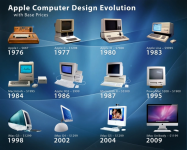
The Apple 1 computer was developed and first presented by Steve Wozniak (Woz), a frequent visitor to the Homebrew Computer Club. Woz and his friend Steve Jobs founded Apple Computer with the specifications in hand and an order for 100 machines at 500 USD each.
Approximately 200 of the machines sold before Apple II was reported to be a complete PC. It had color graphics, a full QWERTY keyboard and internal expansion slots, which were mounted in an optimized plastic case of high quality. The display and I/O equipment were sold on their own. Only the built-in BASIC interpreter was the original Apple II operating system. The last release was “Apple DOS 3.3,” which supported the diskette drive.
It is higher prices and lack of floating-point BASIC, along with the lack of retail outlets, resulted in a lag behind other Trinity Machines until 1979, when it surpasses the PET. Once again Atari puts its famous 8-bit systems on line but took the 4th position.
The Apple II lasted eight years longer than other computers despite sluggish initial sales and hence had the highest aggregate sales. Over 2.1 million had been sold by 1985, and by 1993, over 4 million Apple II had been shipped globally.
IBM Personal Computers (IBM PCs)
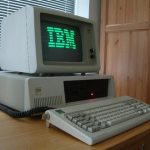
In August 1981, IBM reacted to the success of Apple II with the IBM PC. Like Apple II and S-100, it was built on an open and card-based architecture that enabled the development of third parties for this purpose. The intel 8088 CPU, with 29,000 transistors, runs at 4.77 MHz.
The first model used an external storage audio cassette, although the floppy disk alternative was costly. The choice of cassettes was never used and was removed on the 1983 PC XT. Instead of two disks, the XT added a 10MB hard Disk and expanded the number of expansion slots from 5 to 8.
Whilst the original PC design can only handle up to 64K on the mainboard, up to 640KB of RAM could be accommodated, the rest on cards. Subsequent design reviews extended the board cap to 256K.
The IBM was usually supported by PC DOS and as a system based on CP/M80 from Gray Kildall. Digital research, which was approached by IBM in 1980 to develop their next IBM PC. Dorothy McEwen, Kendall's wife, and a corporate associate met with the IBM officials and could not agree on a non-disclosure agreement. Bill Gates was their only way out now with his ROM BASIC interpreter for the PC. Bill Gates agreed to provide 86-DOS, which was developed by Tim Paterson of Seattle Computer Products. It was later rebranded as a PC DOS by IBM, while Microsoft distributed its variation as MS-DOS.
Gateway 2000 (1985 – 1998)
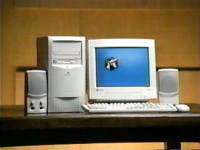
It was later rebranded to Gateway, Inc. It is among the old computer models I have ever met. They were not as popular as the common names in the industry, but they sure graced our days back in the early to mid-90s. Gateway gave Apple and IBM a run for their money.
Gateway, Inc. was established as an American hardware corporation, formerly Gateway 2000. They specialized in a broad range of personal computers, monitors, servers, and computer accessories. It was acquired in October 2007 from Acer, a hardware and electronics company.
In the Sioux City region in the later 19th century, the roots of the name and motif for Gateway can be traced to meatpacking industry. It was normal to bring cattle into Sioux city with a ferry before the Big Sioux and Missouri Rivers were crossed by bridges, and every now and then, a cow slipped from the ferry deck. Often the farmers had no choice other than to abandon the cow for their loss and cross over the fast-moving water. The ancesotrs of Ted Waitt were entrepreneurs, and they would bring this livestock together before falling and selling them until saved to the carpentry plants. SD is also often named the South Dakota gateway because of its position in North Sioux City.
Gateway 2000 was among the innovators of the first PC below $1000, the all in one Astro, a low end computer. Gateway created brand awareness partially by shipping computes in spotted boxes modeled on the cow markings of Holstein. In 1989, Gateway relocated to North Sioux City, South Dakota, from its corporate and development offices. Gateway opened a chain of farmer’s shops called Gateway Country Stores, mostly in the United States’ suburban and countryside, in line with the Holstein Cow mascot. On 31st October, 1998, in an attempt to call for non-millennial markets, Gateway had to drop 2000 from its name.
In October 1999, AOL purchased Gateway, Inc. at the tune of 800 Million USD. In May 1998 Gateway moved its operating base to La Jolla, California, in order to go beyond its model of selling high-end PCs by phone and in order to attract top management and engineers. Gateway later moved to Poway, California, in October 2001 with a view to reducing operating costs. And later on to its corporate headquarters, in Irvine, California, after acquision of eMachines in 2004.
Final Thoughts
The 90s was an awesome time to live in. The economy was booming, the airwaves were filled with alternative rock, blues, R n B, and cool music from old bands like Nirvana. We would play Tamagotchi, Pogs, PlayStation2, Nintendo and other basic technology toys. Everything was cool and lovable back in the days.
What we used to consider high-tech back in the 90s is now seen as primitive technology. These technologies laid the foundation for the technology that we use today. For example, the 90s saw the development of the World Wide Web and the online development of millions of people across the globe. In the last 10 years, a new millennium kicked off with many of the biggest internet companies today including Google, Amazon, eBay, and PayPal.
The 90’s also marked the start of electronic devices going portable. The Apple iPhone and the Android devices as we know them today, Palm Pilots, and Apple Newtons have all grown from the 90s gadgets. In American households, highly portable laptops were also popular at the time. Also, during this time, ICQ and AOL were some of the Instant Messengers that focused on text-based messaging. They were the foundation for the social media communication apps that we know today, like Facebook, Twitter, Instagram, etc.
You probably have been stuck on computers since your teen years. Which computer models were you using back in the days? How do they compare with the computer you are using now?
Which is your all-time favorite computer brand?

